10 Most Expensive Woods in the World
You’ve probably heard of common woods like oak, maple, walnut, and cherry, but how about Lignum Vitae or bocote? Rare woods like these have some stunning features such as distinctive grains, unsurpassed durability, and stunning color-changing abilities. Though these exotic woods are often difficult to work with, the results are well worth the effort and the cost for the unsurpassed beauty they offer. Check out these 10 expensive woods from around the world.
African Blackwood
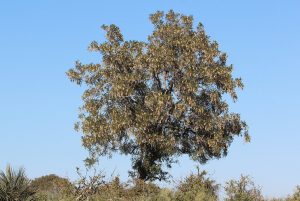
African blackwood (dalbergia melanoxylon) is the most expensive woods in the world because it comes from a slow-growing near-threatened tree. It grows in dry savanna regions in southern and central Africa. This multi-stemmed tree grows to about 25 feet tall on average. The bole is rarely more than a foot in diameter, so it’s difficult to get large pieces of African blackwood from this tree.
This wood is extremely difficult to work with, so products made from African blackwood are costly for multiple reasons. African blackwood has an impressively high Janka hardness rating of 4,050 pound-force. This dark wood has a straight, fine grain that has a blunting effect on cutting tools. African blackwood usually ranges from jet-black to deep purple in hue. It resists decay, heat, and warping, though it’s only moderately resistant to insects. African blackwood is typically used for musical instruments like guitars.
Sandalwood
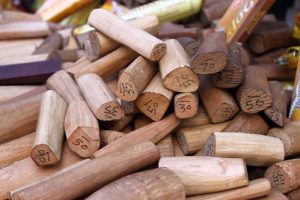
Sandalwood, of the genus Santalum, has a rich, distinctive smell that lingers for decades, giving off a lovely aroma. The scent of sandalwood oil is often used in perfumes, incense, and toiletries. Sandalwood oil is made by processing the wood through steam distillation. The pale yellow-gold, fine-grained wood is also used for decorative boxes and some small pieces of furniture. Sandalwood’s desirability has led to over harvesting, which is what makes this wood so expensive.
Unlike most of the other trees on this list, sandalwood is not prized for its durability or hardness. It rates only a 1,690 pound-force on the Janka hardness scale. Sandalwood trees grow to about 33 feet tall. This is a partially parasitic tree that grows on the roots of other species of trees. You can find sandalwood trees on islands of the South Pacific and in Southeast Asia. Some farmers are now commercially growing sandalwood in Australia as well, which may help relieve some of the shortages and lower its price.
Agarwood
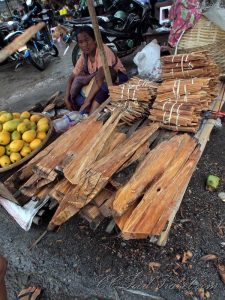
Agarwood comes from Aquilaria malaccensis trees, which grow in the tropical forests of Southeastern Asia. Not all Aquilaria trees can produce agarwood, however, which is what makes the product so precious. The tree must become infected with phialophora parasitica, a mold that takes root when the tree becomes damaged. In response to the infection, the tree produced a dark aromatic resin called oleoresin, which is what turns the ordinary wood into agarwood. It’s estimated that just 7% of Aquilaria trees produce agarwood, and all Aquilaria trees are considered critically endangered.
The painstaking process of harvesting agarwood involves meticulously separating this infected wood from the surrounding healthy Aquilaria wood. Agarwood has a rich aroma that’s used to make incense and oils which are commonly incorporated in religious ceremonies. This is often referred to as the “Wood of the Gods.” The wood is usually available only in chips, as it’s so difficult to find.
Lignum Vitae
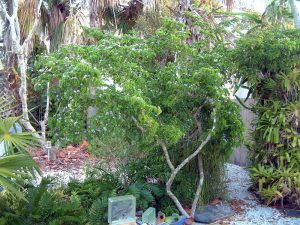
Also known as ironwood, Lignum Vitae is the national tree of the Bahamas. This wood is nearly extinct and rarely found in the wild. Lignum Vitae trees grow very slowly, so it’s difficult to replenish the supply. One of the most distinctive features of ironwood is its extremely high oil content. This wood is the hardest of all trade woods, with a 4,500-pound-force rating on the Janka scale of hardness, compared to just 2,940 pound-force for African blackwood. Bowling balls were once made from this wood, as were the bearings for the first nuclear-powered submarine in the world.
Cricket balls are still made from lignum vitae, when available, as are some tool handles, bearings, and mallet heads. However, its endangered status has forced many manufacturers to seek alternative options.
Pink Ivory Wood
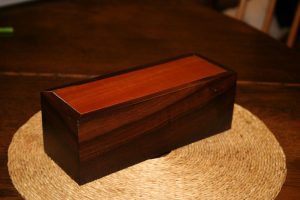
Pink ivory grows in Mozambique, Zimbabwe, and South Africa. This gorgeous pink-hued wood ranges from pinkish-brown to deep maroon, making it highly appealing for its aesthetics alone. It has a fine grain that’s straight to interlocked. This exotic wood is exceptionally strong with a Janka hardness rating of 3,230 pound-force. Its high density makes it resistant to decay.
Pink ivory wood has a beautiful natural luster. It’s often used for knife handles, billiard cues, and some pieces of carved furniture. It’s difficult to work with pink ivory wood in boards, however, as the wood is prone to tearout when planing.
Bubinga
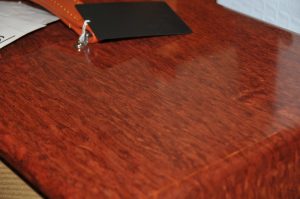
Bubinga is an African hardwood that ranges from deep purple to red to pinkish-red in hue. Reddish-brown bubinga wood is most common. Also known as African Rosewood, this lumber comes from both Guibourtia tessamannii and G. pellegriniana trees which grow in Gabon, Cameroon, and the Ivory Coast of Africa. Bubinga trees can grow up to five feet in diameter, so it’s possible to make a tabletop from a single slab. You can find bubinga with varying grains including waterfall, mottled, quilted, flamed, and pommele.
Bubinga’s Janka rating is 2,410 pound-force; so it can dull woodcutting tools, but the difficulty of working with it is typically worth the effort for the distinctive beauty that this wood lends to a piece. It’s often used in large planks to minimize the amount of cutting that needs to be done. You’ll see Bubinka used for inlays and durable furniture pieces. When choosing Bubinka, it’s important to note that this wood is susceptible to furniture beetles, and the heartwood resists preservative treatments, so you’ll need to care for it mindfully.
Purpleheart
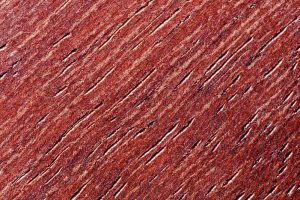
As the name suggests, purpleheart (Peltogyne purpurea) can have a greyish-purple or deep purple hue. It typically looks more gray or brown when first cut, but the color deepens and becomes more purple with exposure to UV light. Purpleheart is also known as Amaranth. This wood grows in Central and South America. These trees are most commonly found in the rainforests of Guyana, Brazil, and Suriname.
Purpleheart trees can grow up to 170 feet in diameter, making it possible to cut impressively large rounds and planks. It’s an incredibly stiff wood with a Janka hardness rating of 2,520 pound-force, making it ideal for flooring, furniture, and boat building. When heated, purpleheart produces a gummy resin that can damage tools. The difficulty of working with purpleheart is one of the reasons that it’s so costly.
Ebony
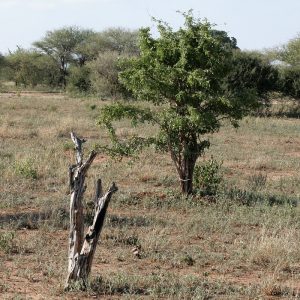
Ebony is a deep-colored hardwood that’s harvested from several species of Diospyros trees. Ebony wood is so highly sought after that many ebony trees are extinct or endangered. Wild Dwarf Ebony is extinct, though there is an effort to reintroduce a cloned species. African Black Ebony is classified as vulnerable, Mun Ebony is critically endangered, and Gaboon Ebony is endangered. Ebony trees prefer to grow in a solitary environment that can accommodate their sprawling roots. It takes 70 to 200 years for a single tree to mature to a usable size.
Pure black ebony wood, which is the most valuable, only comes from trees that are at least 150 years old. Ebony wood is extremely hard and durable, with a beautifully striped wood grain. It ranges in hue from deep red to solid black. Since this wood is so rare, it’s typically used in small inlays to add a striking accent to furniture. It’s rare to see a piece of furniture made entirely from ebony.
Bocote
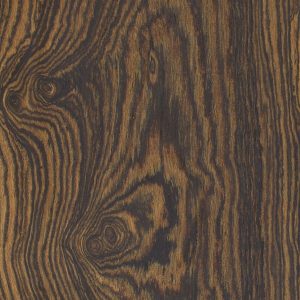
Bocote wood comes from a flowering plant that grows in Central America, South America, the West Indies, and Mexico. When first cut, this wood has a yellowish-brown hue, but this darkens with time. You can find Bocote with a variety of grains from neat straight lines to wild swirls.
Though it’s strong and durable with a Janka hardness rating of 2,010 pound-force, this wood is surprisingly easy to work with. This makes it stand apart from many other expensive woods. Bocote can be cut, hammered, and glued easily. Bocote has a striking grain that makes it a popular choice for furniture, flooring, and cabinetry. You’ll also find Bocote used for knife handles, pens, pool cues, and inlays. It polishes beautifully, taking on an alluring gloss.
Brazilian Rosewood
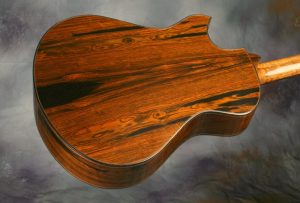
Brazilian Rosewood (Dalbergia nigra) ranges from purple and red to dark brown in color. It may have unique streaks of yellow or other lighter hues. The grain features a distinctive spider webbing that adds to its beauty. This wood is durable and resistant to both insects and rot.
Brazilian Rosewood has a Janka hardness rating of 2,790 pound-force, which can create a dulling effect on some tools. Overall, however, it’s very easy to work with. Brazilian rosewood is commonly used for flooring, furniture, and musical instruments.
We know how expensive exotic woods like Teak can be, which is why you should take care of them! If you’re looking for breathtaking flooring, furniture, or sculptures, knowing which woods to choose is important. At Teak Master, we know our woods and offer the expert restoration services that you need to keep wood products looking their best. Contact us for thoughtful care that will keep your decks, furniture, and other items in prime condition year after year.
